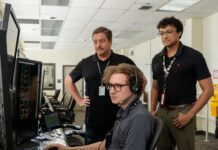Discovering the Unseen: How ESPO Facilitates NASA’s Airborne Campaigns
In the world of scientific exploration, particularly concerning Earth sciences, the work of NASA’s Earth Science Project Office (ESPO) often goes unnoticed. Yet, this team is vital, addressing concerns before they even become apparent. From managing missing equipment like liquid nitrogen canisters to securing access to tightly regulated areas such as South Korean military bases, ESPO handles it all efficiently.
ESPO plays a crucial role in managing some of NASA’s most extensive and intricate airborne missions within the Earth Science Division. These missions are not only domestic but also span across international borders. They involve complex logistics and a wide array of stakeholders, including governmental agencies, universities, and international partners.
The Essence of ESPO’s Work
The ESPO team’s primary role is to ensure the smooth execution of large-scale airborne research campaigns. By doing so, they allow scientists to focus solely on the scientific aspects of the mission. Assistant Branch Chief Erin Czech emphasizes this, saying, "Our mission is essentially to let the scientists concentrate on science. We stay behind the scenes, solving problems so that others don’t have to be bogged down by details."
One of the significant domestic missions managed by ESPO is the Sub-Mesoscale Ocean Dynamics Experiment (S-MODE). This project involved deploying various platforms such as planes, drones, marine robotics, and research vessels over three separate field campaigns from 2021 to 2023. The goal was to investigate ocean eddies and sub-surface dynamics, with the NASA Ames Research Center in Northern California serving as the control hub.
International Endeavors: ASIA-AQ
On the international front, ESPO has managed the Airborne and Satellite Investigation of Asian Air Quality (ASIA-AQ). This mission, initiated in January 2024, involved deploying satellites, aircraft, and ground-based sensors across South Korea, Thailand, and the Philippines. The purpose was to study air quality and understand the contributing factors, as part of a larger global effort. The campaign required extensive planning and coordination with local authorities and scientific organizations.
ESPO’s work begins long before the actual deployment of a mission. Initially, they help establish a mission framework. This includes budgeting, securing grants and funding, and conducting site visits. According to Czech, the team is not composed of scientists; rather, their role is to manage risks, create contingency plans, and facilitate communication among various groups involved in the mission.
Preparing for Deployment
As the deployment date approaches, ESPO focuses on logistics—arranging equipment shipments, reserving accommodations, obtaining diplomatic clearances, and coordinating inter-agency planning meetings. This process is particularly challenging for multi-site international missions like ASIA-AQ. Multiple visits to each country are often required to finalize deployment sites, assess infrastructure upgrades, and arrange on-ground logistics such as transportation and accommodation.
Jhony Zavaleta, Deputy Director for ESPO and Project Manager for ASIA-AQ, highlights the importance of these preparatory trips. They involve engaging with partner organizations, such as civilian aviation authorities and foreign science ministries, to ensure smooth operations once the mission officially begins.
Execution and Challenges
Once a mission is underway, ESPO’s role becomes even more critical. The team works tirelessly to ensure that every aspect of the operation runs smoothly. "During a deployment, you’re working all day every day," says Czech. The dedication and hard work of the entire mission team are crucial to making the most of the resources invested and seizing every scientific opportunity that arises.
For Zavaleta, day-to-day activities include escorting personnel on military bases, sourcing liquid nitrogen, coordinating with media, setting up satellite communications, and managing logistics between sites. The team operates in a leapfrog manner, where they set up one location, overlap with the site management team, and then move on to prepare the next site.
Despite meticulous planning, unforeseen challenges, or "wrenches," as Czech describes them, are inevitable. A significant challenge for the S-MODE mission was the global pandemic, which delayed the initial deployment planned for April 2020. The team had to set everything up multiple times before the mission finally launched in October 2021. Another challenge arose when the primary research vessel backed out four months before the mission’s start, necessitating a scramble to find a replacement.
Post-Deployment and Continued Support
Even after the field deployment ends, ESPO’s work is far from over. There are years of follow-up activities, including organizing annual science team meetings, tracking publications, and compiling final reports. For the S-MODE mission, the final report is scheduled to be presented in Washington DC in May 2025.
For ASIA-AQ, which concluded in March 2024, the next steps involve returning equipment and personnel to their home bases, coordinating a science team meeting in Malaysia in January 2025, and supporting the scientists in preparing a preliminary research report.
The Value of Experience
ESPO’s ability to manage these complex operations hinges on their extensive experience. "In many ways, our value to NASA lies in the fact that we’ve been doing this a long time," Czech states. Since its first mission in 1987, ESPO has managed over 60 campaigns, accumulating a wealth of institutional knowledge and expertise. This experience is a significant asset to NASA and contributes to the success of these critical scientific endeavors.
For those interested in exploring the data collected from these missions, such as S-MODE, resources are available through the Physical Oceanography Distributed Active Archive Center (PO.DAAC).
In summary, the Earth Science Project Office is an unsung hero within NASA’s Earth Science Division, ensuring that scientific missions proceed without a hitch. Their meticulous planning, adept problem-solving, and extensive experience allow scientists to focus on their research, ultimately advancing our understanding of complex environmental phenomena.
For more Information, Refer to this article.


































